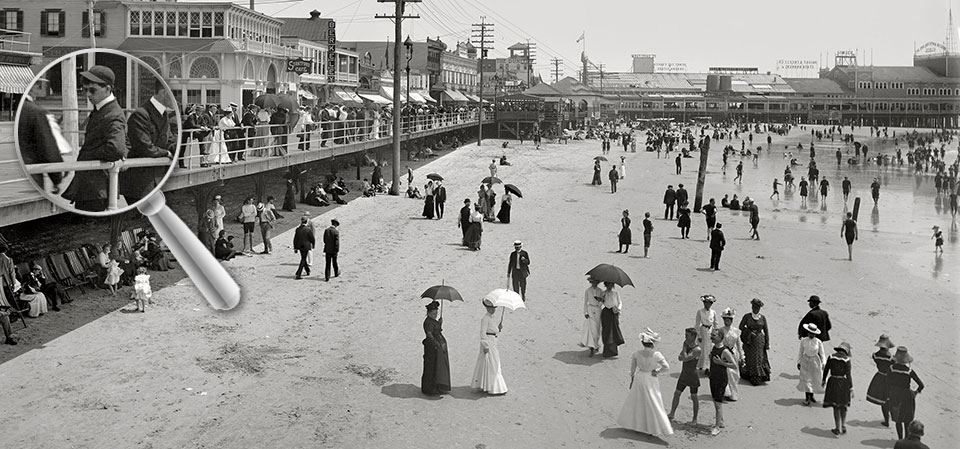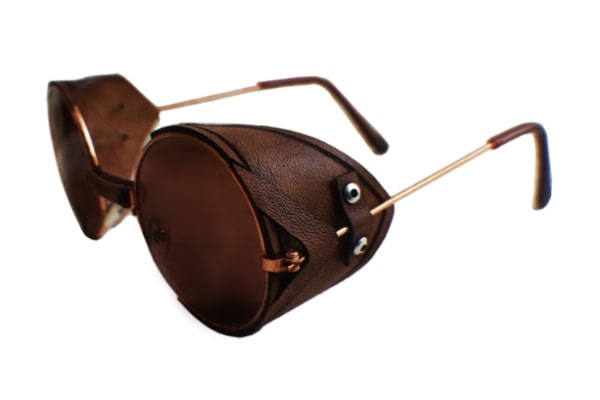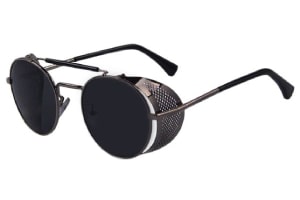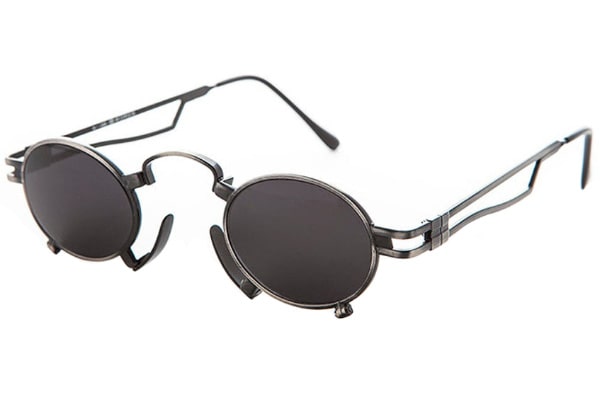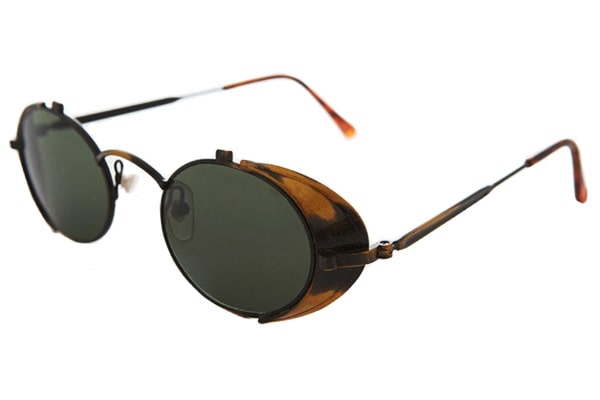Steampunk Glasses
Tips to Stick With 1800s Fashion

Steampunk goggles and, to some degree, steampunk glasses and sunglasses are perhaps the most iconic accessories of the steampunk style. But have you ever wondered what the perfect steampunk eyewear should look like?
Steampunk is an aesthetic movement inspired by, among other things, the Victorian era in England (1837-1901), the American Civil War (1861-1865) and the French Belle Epoque (1879-1914). Aesthetically, steampunk is therefore a fantasized version of the fashion of the 19th century (and early 20th century).
And so, ideally, steampunk glasses should look like what people were wearing in the 19th century. But did sunglasses even exist in the 1800s? And if so, what did they look like? You’re about to find out!
Did Sunglasses Even Exist in the 19th Century?
Look at the picture below. It was taken in 1906 on a beach in Atlantic City, New Jersey. As you can see, sunglasses were quite rare at the beginning of the 20th century. Among the hundreds of people present, I only spotted one wearing sunglasses (perhaps you will have more luck!). Obviously, people preferred hats or parasols, which are ubiquitous.
Atlantic City, 1906 (click on the image to display its full and larger version)
In 1929, it was on the same beach in Atlantic City that Sam Forster would sell the first pair of sunglasses from his Foster Grant brand. By 1930, the sunglasses fashion had taken hold. But what was it like in the 19th century?
The First Sunglasses
In 1459, the Portuguese scientist Nuno Fernandes imported from Italy one pair of spectacles with colored lenses to use them when riding in the snow. This is probably the first record of someone using a pair of glasses to protect the eyes from the sun’s harmful rays. But for centuries, the function of tinted glasses was mainly therapeutic: many thought that blue or green lenses could correct certain vision impairments. It was not until the 1840s that the concept of sunglasses really emerged.
The first references to the term “sunglasses” were found in American newspapers of the middle of the 19th century. In the October 23, 1841 edition of The North Carolinian an advertisement was published for a shop called “the Subscriber.” Among the list of various items that this store advertised, sunglasses (“sun glasses” in the text) are found. Other vendors like W.H. Cary & Co, E. Samsom and W. W. Wesser & Co published similar advertisements in U.S. newspapers throughout the country during the same period. The first advertisements with pictures or photos of sunglasses were published later. Examples of those can be found in the June 19, 1898 edition of The Herald and the August 19, 1917 edition of the Evening Star.
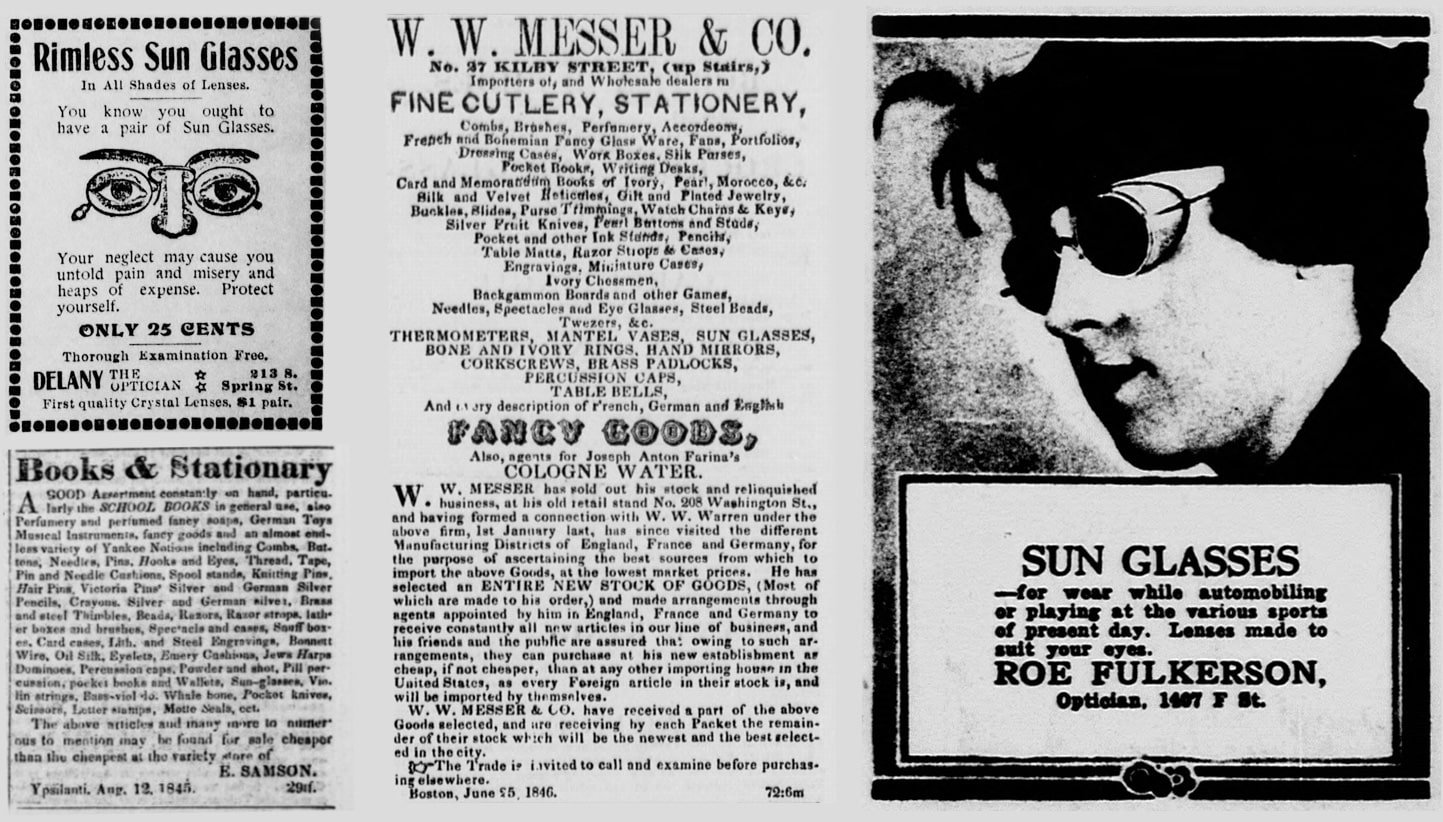
Some examples of ads for sunglasses in U.S. newspapers from the 19th and early 20th century. Take a look at the model on the right. Now that’s what steampunk sunglasses should look like!
Common Spectacle Styles in the 19th Century
In the first centuries of the existence of glasses, lenses were round. Between 1810 and 1830, the oval, lighter glasses, became the most popular style in America. Then it was the turn of rectangular and octagonal glasses in the 1840s, until oval shaped spectacles came back in vogue in the 1850s.
Eyeglass frames were generally made of metal (iron, silver, gold, steel, copper, bronze or other alloys), but some were manufactured from tortoise shell or cattle horn. As for their shapes, they were diverse and varied, as evidenced by this catalogue published in 1897.

Some examples of 19th-century glasses designs – Catalog of Maison D. Latour (1897)
Clip on nose, straight temples, curved temples, C-bridge, X-bridge… As you can see, spectacles of the 19th century cannot be reduced to a single style or look. Two models, however, stand out by being very original: glasses with side shield and glasses with four lenses:
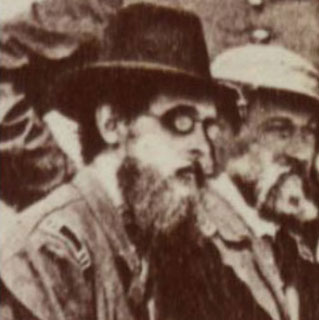
An American soldier wearing steampunk glasses round sunglasses with side shields in 1863
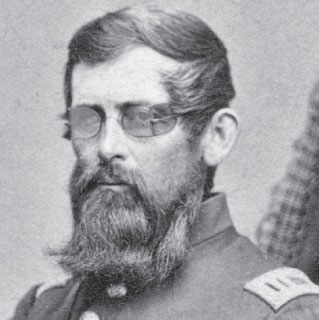
Captain Thomas B. Griffith, volunteer during the American civil war, with four-lens glasses
The Perfect Steampunk Sunglasses
By now, you should know what steampunk glasses should look like! Here is our selection of steampunk sunglasses that match with the fashion of the 19th century:
Steampunk Glasses With Blue Lenses: Why Is It Such a Good Idea?
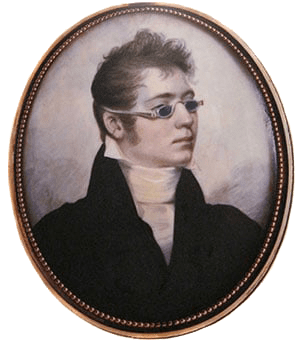
Portrait of a Gentleman with blue spectacles, by John Wesley Jarvis (1807)
Did you know that blue lenses were all the rage in the 19th century? This may sound surprising, but there are several reasons for this.
In England in 1854, Robert Hunt found that a light beam passing through a blue lens could magnetize the needle of a compass. No other lens color achieved this result. As a consequence, mystical powers were attributed to blue glasses, and they became very popular.
Later, in 1871, American General A. J. Pleasanton demonstrated that the sunlight filtered through dark blue glass stimulates the growth of plants and animals. Many concluded that wearing eyeglasses with blue lenses would be beneficial to the human eye.
Steampunk Sunglasses Help Your Eyes as Well as Your Look
Steampunk sunglasses aren’t just a fashion accessory! They also help protect eyes from dust, drying breezes and, most important of all, the damaging effects of the ultraviolet (UV) rays emitted by the sun. Prolonged unprotected exposure to UV rays can cause keratitis (inflammation of the cornea) and increase the risk of developing cataracts and age-related macular degeneration (AMD). Shades that are labeled UV400 have been treated to block all ultraviolet rays with wavelengths up to 400 nanometers (this covers all of UVA, UVB, and UVC rays). It’s worth noting that UV protection is independent of the tint or the shade of the lens.

